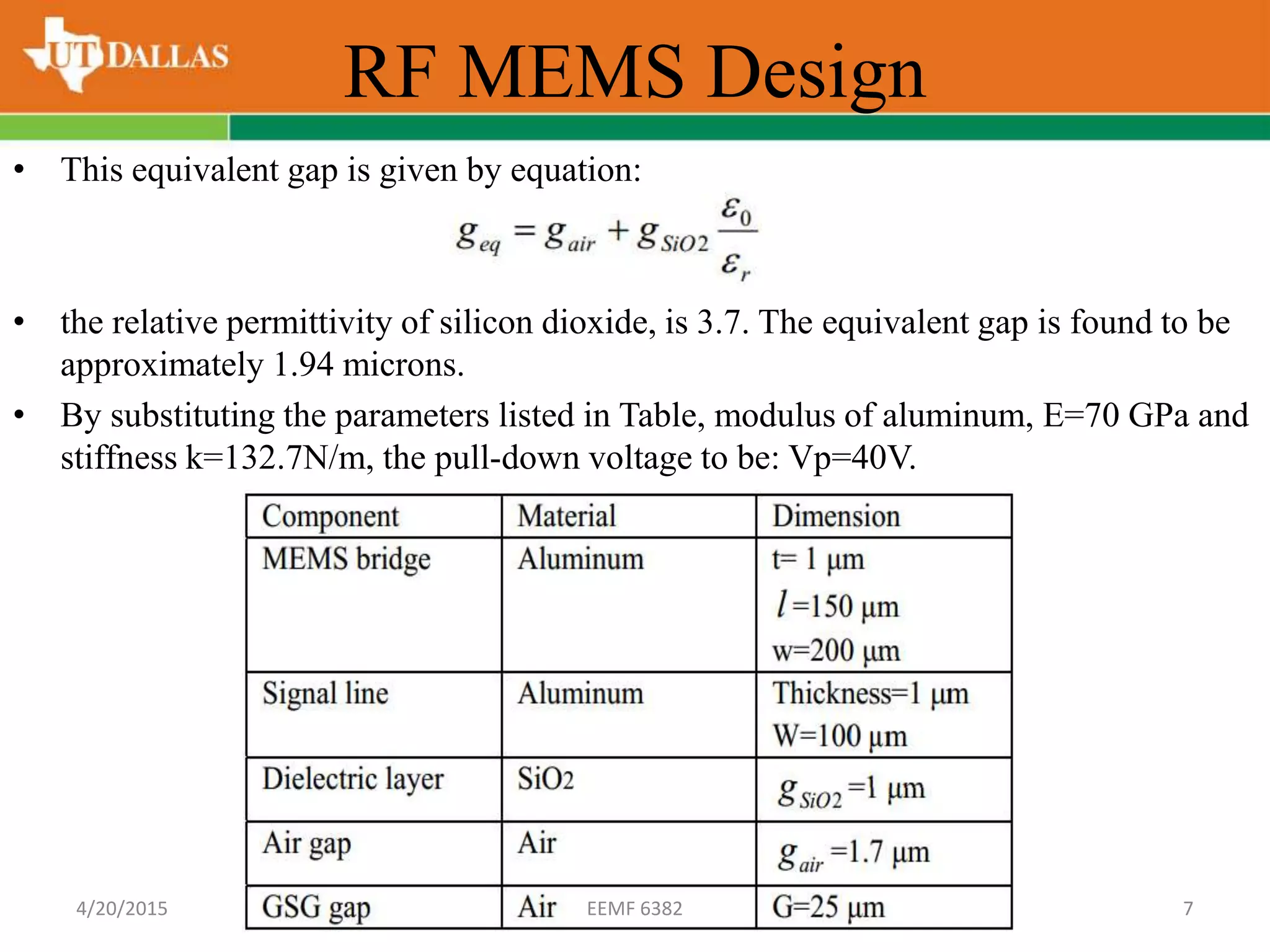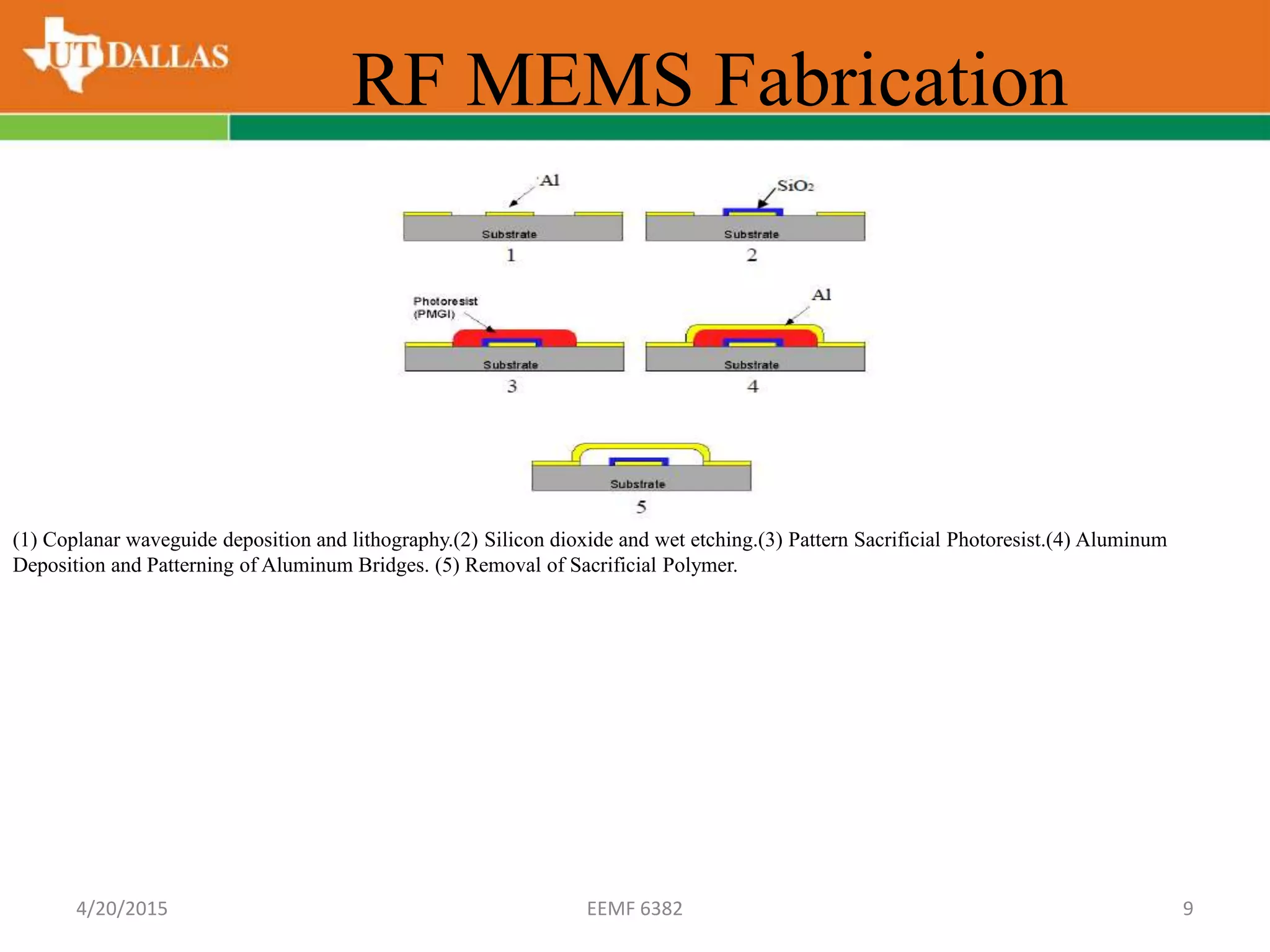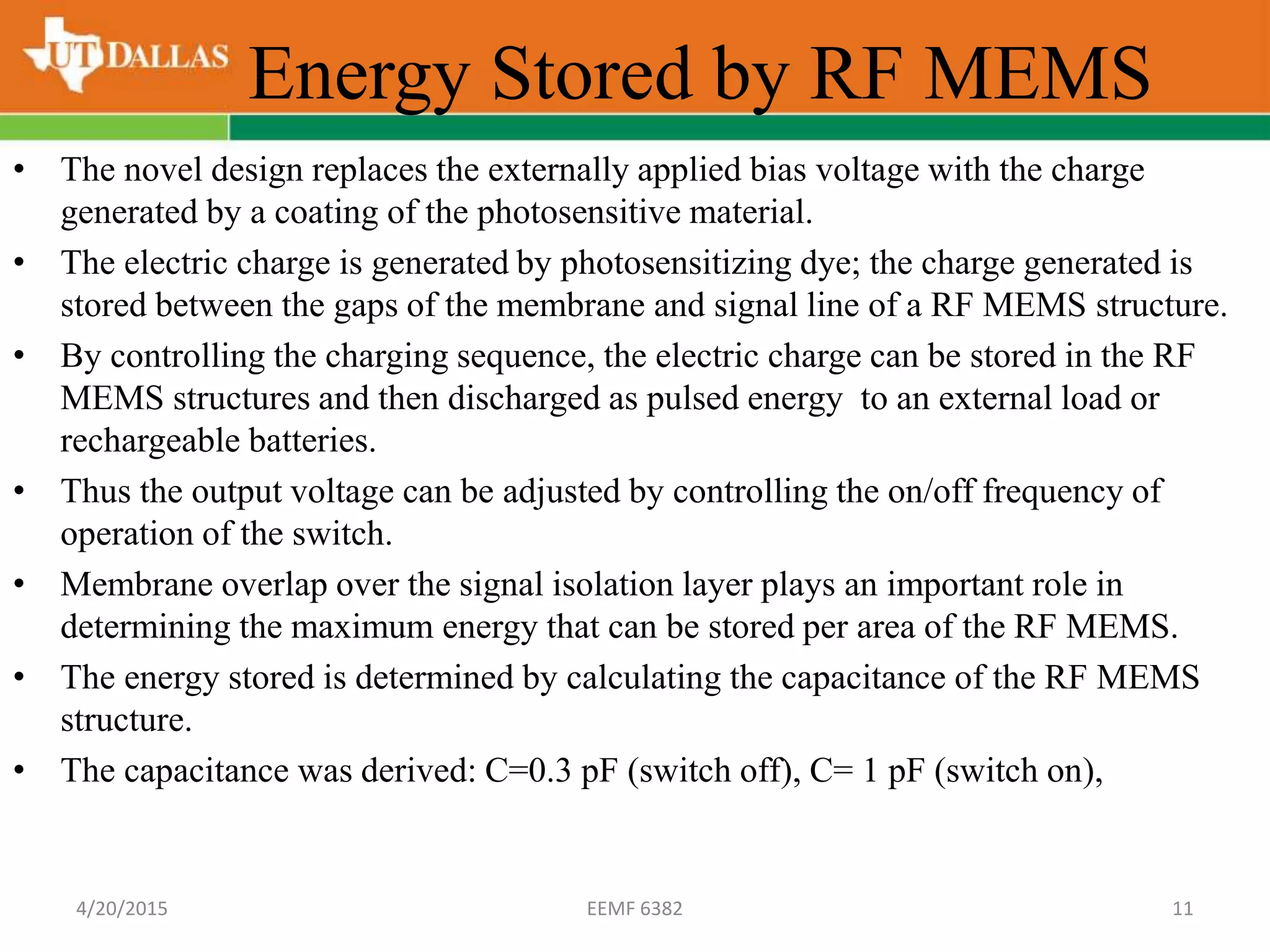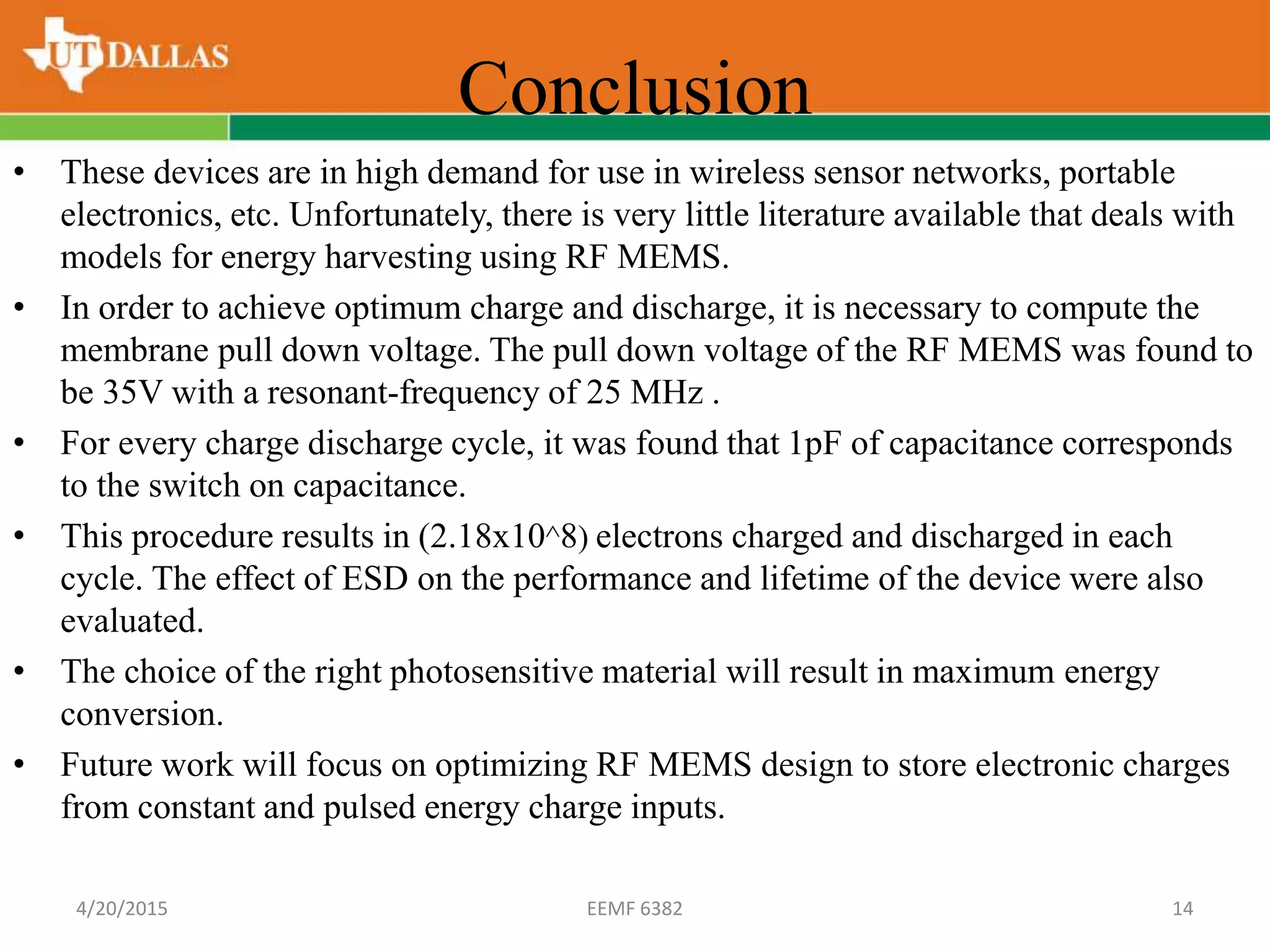The document details the design and fabrication of RF MEMS switches for energy harvesting applications, highlighting their advantages over traditional switches due to low loss, low power consumption, and high durability. It discusses the switch's operation, fabrication process, characterization methods, and energy storage capabilities using a photosensitive material. The findings indicate a pull-down voltage of 35V and emphasize the importance of optimizing RF MEMS designs for better energy conversion in future developments.














